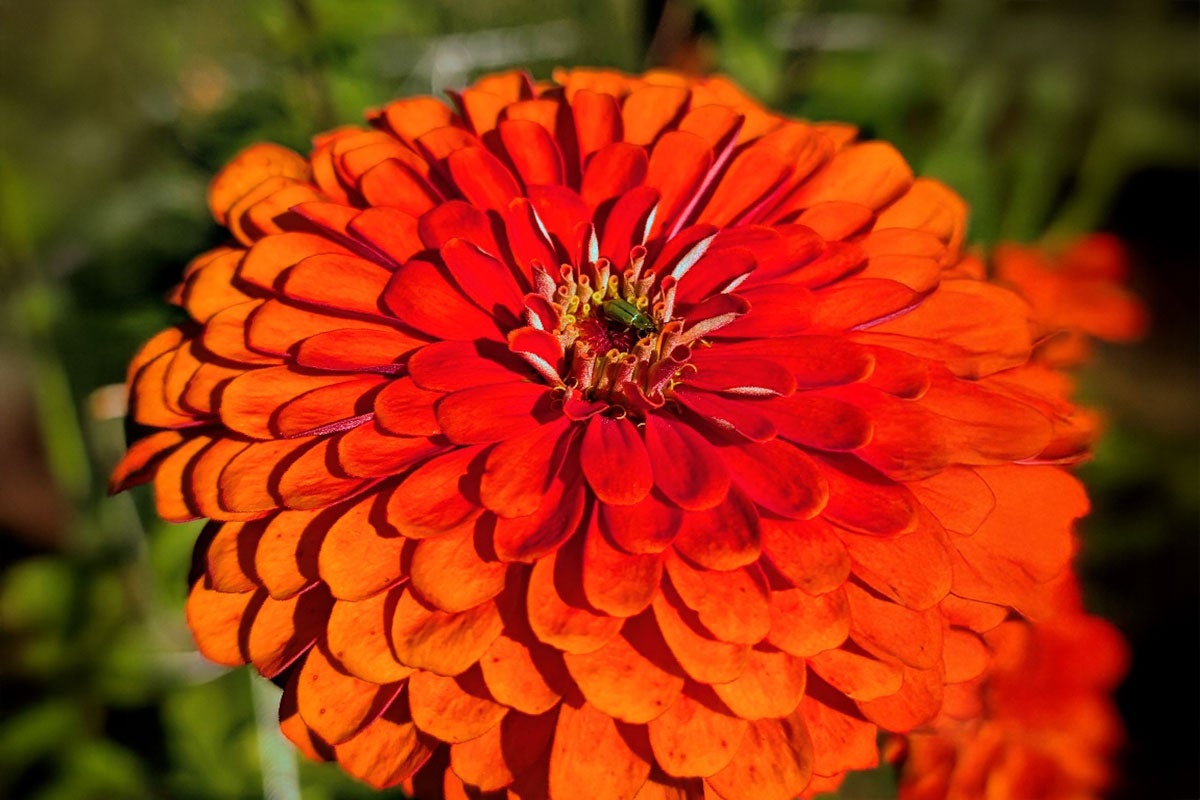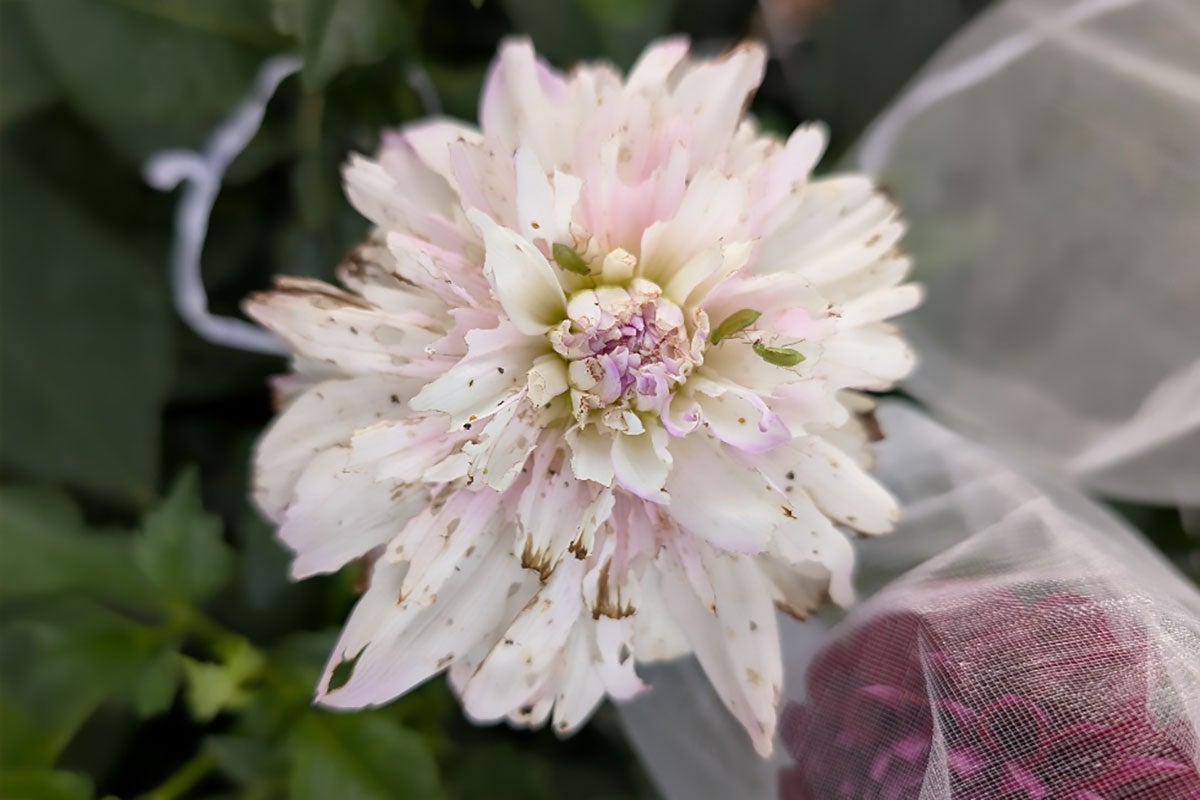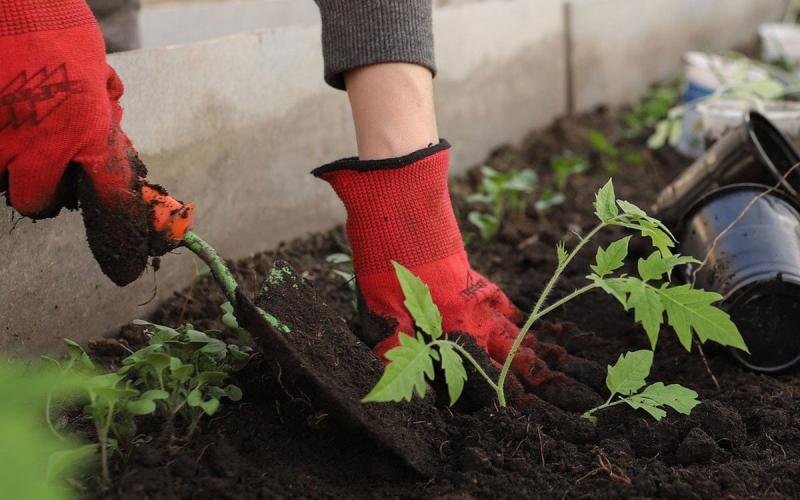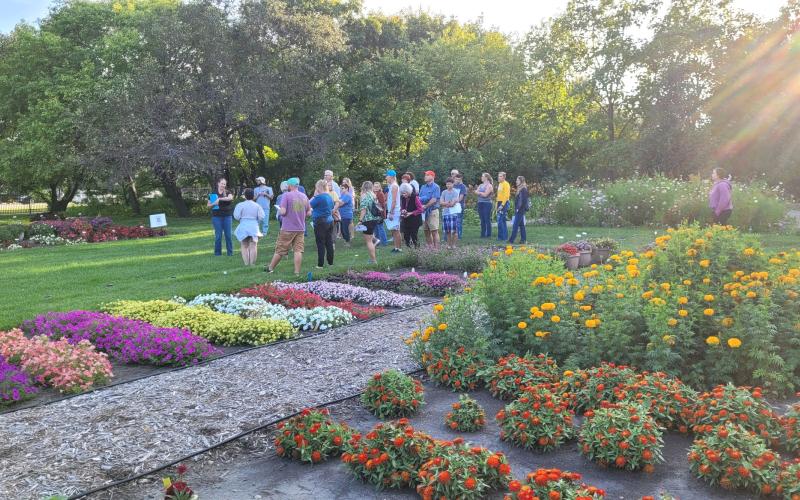Overview

Multiple cut flower farms in eastern South Dakota have reported the presence of Northern corn rootworms (Diabrotica barberi) and the less common Western corn rootworm (Diabrotica virgifera virgifera) on a variety of crops, including sunflowers, zinnias, and dahlias. Adult populations of these beetles typically emerge in mid-July predominantly in row crops and remain active until the first hard frost.
As the name suggests, corn serves as the primary host plant for corn rootworm species, with larvae feeding on roots below ground and adults (though less frequently) feeding on leaves, silks, and tassels. Many of the state’s cut flower farms are in rural areas, often near agronomic production. Therefore, movement of adult rootworm populations between corn and other attractive hosts, such as cut flowers, can be expected. For a detailed overview of corn rootworm biology, life cycle, and management in the context of commercial corn production, see Northern and Western Corn Rootworm in South Dakota.
Due to the relative newness of cut flower production in South Dakota and the limited research on arthropod pests and plant diseases affecting these various crop species, it is important for growers and scientists to monitor pest pressures from season to season. Careful attention to the species present, their timing, and the damage they cause helps inform integrated pest management strategies. This information supports optimizing both marketability (such as bloom quality, stem length, and harvest timing) and profitability by managing labor and production costs effectively.
In 2022, the USDA Census of Agriculture reported that cut flowers in South Dakota were valued at $75,840 across 8.5 acres of open fields and protected cultivation. This equates to approximately $8,920.00 per acre, or $0.20 per square foot. This is well above the value of most other specialty and agronomic crops in the state. These figures highlight the importance of effective pest management to protect these high value crops.
Damage

Thus far, grower observations indicate that larvae are not present in the soil and are not feeding on cut flower root crops, only the adult beetles are present on above ground parts of the plants. Multiple adults congregate on the blooms feeding on the pollen (Figure 1).
Although pollen feeding doesn’t cause direct damage, the presence of the beetles themselves can be unsightly and undesirable for growers who may be conducting daily harvests or allowing consumers on the farm for self-pick business models.
Aside from pollen, adults may feed on a variety of other above ground plant parts with their chewing mouth parts. Growers have observed damage to both foliage and the petals of the flowers causing small holes or notches on various parts of the bloom. Even minor aesthetic damage can be deemed unmarketable, therefore requiring extra vigilance for monitoring and management.


Management
The following techniques can be used to manage corn rootworms and other beetles.
- Yellow sticky cards: Placed throughout the production site, these can attract and capture adult beetles. While they may reduce some numbers, their main purpose is to indicate population levels over time.
- Physical exclusion: Row covers made of spunbond material or insect netting can be applied over low tunnel structures, or organza can be used on individual blooms for protection.
- Hand removal: In smaller operations, beetles can be removed by shaking or dislodging adults into a bucket of soapy water.
- Insecticides:Chemical control can be tempting when pest pressure builds, but it is rarely the best option for cut flower systems where pollinators and other beneficial insects are highly active. The phrase “cut flowers” is seldom found on pesticide labels, and few products are specifically registered for these crops in South Dakota.
Reference the fact sheet Pest Management for Utah Cut Flower Production: Insects and their Relatives for in depth information on integrated pest management for cut flower operations along with common pests that may occur.
References
- Corn Rootworm Beetles on Flowers in the Fall. 2016. Iowa State University.
- United State Department of Agriculture. 2024. 2022 Census of Agriculture: South Dakota State and County Data.
- Varenhorst, A., Dunbar, M., Wagner, P., Rozeboom, P., Bachmann, A., McManus, B., and Fuller, B. 2021. Northern and Western Corn Rootworm in South Dakota. South Dakota State University.
- Varenhorst, A., Rozeboom, P., Wagner, P., and Bachmann, A. 2023. Corn Rootworm Adults Are Active in South Dakota. South Dakota State University.
- Volesky, N., Murray, M., and Stock, M. 2025. Pest Management for Utah Cut Flower Production: Insects and their Relatives. Utah State University.


